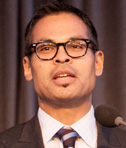Collaboration Community Engagement Incarceration Trends September 9, 2015
Local jails admit nearly 11 million people every year, a number that has almost doubled since 1978. Most people are released within a few days, but being detained can lead to serious consequences: job and housing loss, more punitive sentences, reduced social mobility, future criminal behavior, worsened health, and weakened familial and social bonds. These consequences are severe for those entering jail who are already disadvantaged, whether because of mental illness, substance abuse, poverty, or other factors such as race and gender.
Forming the Innovation Fund
Recognizing these severe effects of jail incarceration, jurisdictions nationwide are rethinking the use of jails and their local justice systems to make communities healthier, fairer, and safer. To further these efforts, the John D. and Catherine T. MacArthur Foundation partnered with the Urban Institute in 2016 to host the Innovation Fund under the Safety and Justice Challenge. The Innovation Fund supported a cohort of 20 jurisdictions to implement bold and innovative ideas to reduce over-incarceration in jails and build capacity for future system change. The Innovation Fund demonstrated that small seed funding can achieve outsized impact for jail reform in diverse communities nationwide.
With $50,000 grants each, technical assistance from Urban Institute, and a peer learning network, Innovation Fund sites transformed their use of jails by shifting away from presumption of detention, increasing local capacity to understand their jail population, and expanding reform to traditionally overlooked populations.
Supporting alternatives to jail
Many Innovation Fund sites focused their efforts on supporting alternatives to jail and shifting away from presumption of detention. For instance, the Akron County Prosecutor’s Office implemented a felony summons initiative throughout Summit County, OH for people charged with non-violent, low-level felony offenses. Focusing on felonies generated concern locally, but the Akron Prosecutor’s Office secured leadership buy-in and trained over 4,000 officers in 10 agencies. To date, the county has issued over 700 summons. Polk County, IA used the opportunity to train officers in the Crisis Intervention Team (CIT) model; training increased rates of police drop-offs to crisis observation centers rather than the county jail or local hospital. Lastly, three jurisdictions used the Sequential Intercept Model (SIM) to better understand their criminal justice and mental health systems, and identify opportunities to safely divert people with behavioral health issues from needless involvement in the criminal justice system.
Understanding the jail population
Jurisdictions also transformed their use of jails by increasing local capacity to understand their jail population and overall justice system. Allegheny County, PA and San Francisco, CA tackled their data systems by building powerful data dashboards and analytic tools to monitor key points and influence decision-making. Campbell County, TN implemented the Service Planning Instrument for Women (SPIn-W), a gender-responsive assessment and case planning tool. Data from the SPIn-W allowed key stakeholders to better understand the needs and risk factors of women in their local jail, and make data-driven decisions on referrals for clients to services and programming.
Expanding jail reform to overlooked populations
Some jurisdictions expanded their jail reform efforts to populations often overlooked in justice system interventions. Buncombe County, NC developed and piloted an intimate partner violence (IPV) pretrial supervision protocol and deployed the Ontario Domestic Assault Risk Assessment (ODARA) for people with IPV charges on pretrial status. The county has seen jail bookings for people with IPV offenses drop by 10%. Missoula County, MT conducted interviews with incarcerated Native Americans to learn about cultural identity during detention and implemented culturally-specific programming in the jail. Recommendations from data collection have influenced strategic conversations about jail programming and reentry for Native Americans countywide.
Even with small seed funding, the Innovation Fund spurred meaningful change on justice system practices in 20 distinct communities and built a sustainable community of innovators over a year and a half, with impacts that continue to grow. We are excited to see what our sites will do next.


